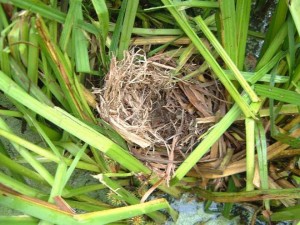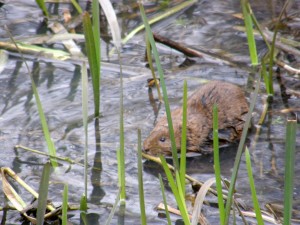Survey
Water voles are found in both upland and lowland
areas of Britain and are associated with wetland habitats.
Once common and widespread, the water vole has suffered a significant decline in numbers and distribution to the extent that the species is no longer found across much of its former range. Interpretation of recent survey results of key national sites have shown that water vole populations declined substantially during the 1990s, but more recent data suggest that the decline may have stabilized.
The water vole and its burrows are afforded full legal protection.
 Surveys are undertaken from mid-April to early September.
Surveys are undertaken from mid-April to early September.
The target water course is walked in an upstream direction, with all field signs of water vole recorded on a plan.
Burrows, nests, lawns, runs, footprints, droppings, latrines and feeding remains are noted, as well as any sightings of individual animals.
Legislation
Water voles are fully protected under Section 5 of the Wildlife and Countryside Act 1981 (as amended).
Legal protection makes it an offence to:
- intentionally kill, injure or take (capture) a water vole;

- possess or control a live or dead water vole, or any part of a water vole;
- intentionally or recklessly damage, destroy or obstruct access to any structure or place which water voles use for shelter or protection or disturb water voles while they are using such a place;
- sell, offer for sale or advertise for live or dead water voles.
Water voles are listed as a Species of Principal Importance under the NERC Act 2006.

